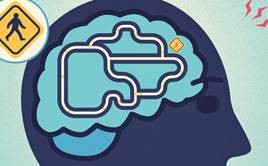Module 05 - Memory of pain - He mahara ki te mamae

The full resource:
The focus of this module is the brain and its capacity to remember and learn and its role in chronic pain. Here is a brief introduction video
In this module:
- The focus is on the brain and its capacity to remember and learn
- The memory of past experiences influences our experiences today
- Noticing and recognising those patterns is the first step to influencing or changing them
- Memory will influence your chronic pain
- You can influence your future memories
Humans have large brains and this allows for an amazing capacity to lay down memories and also to learn. Let’s firstly consider why this is so helpful and how this impacts on your everyday life. This video outlines how a pain experience can become neurosignature that contributes towards you feeling pain despite no threat or danger in the body now. As previously mentioned, we use the example of an acute injury to show these processes, but they will be the same whatever the reason for your chronic pain.
There are things we remember and as well as other, more hidden ones – read here on the role of implicit memories. Memories and chronic Pain HE3228
This video shows that one neurotag can trigger the pain experience and how this was changed over time Phantom limb pain - the Baker and the Bread
To understand the role of memory and influence your pain, here are things you can do:
- Read about the role of memory in maintaining chronic pain and other bad habits HE3229
- Introduce a new neurotag – this may be a different sensation, like sound (music) or smells, a mental puzzle whilst doing the usually painful activity or any other form of distraction – Add a Neurotag HE3227
- Be mindful of laying down helpful memories; spend some time to recall your small victories, enjoyments, activities you managed to do, kind words you heard, achievements; read more on why and how: 14 Benefits of Practicing Gratitude (Incl. Journaling)
- Be deliberate about recalling things that did NOT change your pain; due to our brain's bias to keep us safe, things that are ‘neutral’ are less likely to be noticed and therefore remembered. This video shows when you end up in pain you are unlikely to remember the whole experience, including the better bits How this common bias warps our decisions
- Use your imagination to learn and practice a new pattern; if repeated regularly, you will be able to do this imagined pattern in ‘real life’; read about Motor Imagery and its role HE3230
- Create new memories - try out something new – suggestions in the list of pleasant activities HE3277
- Practise this exercise that encourages a change in your sensory experience: Changing colour technique
- Listen to this sports coach on why and how to visualise a movement or situation and try this for a movement or situation pain gets in the way: A Beginner's Guide to Visualization (Sport & Athletes)
- Find more ideas about changing your future pain HE3276
Hear patients share what exploring memory meant for their pain journey – watch Listen to the neurosignature stories
Read more about this from other centres, see The Memory of Pain – PainScienceCenter.com
For any ‘Professor T’ fans – this quote is from his recent series: “Memories have the power to frighten and the power to soothe. They are possibly our most powerful tool.”
And remember:

[image: Neurons that fire together wire together]